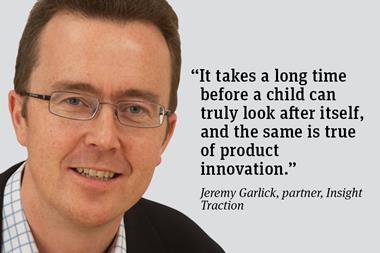
Our industry is full of change and challenge – discounter growth, the blurring of grocery and foodservice, the fast developing health agenda. With all this change going on, what practical steps can you take to make sure you’re doing quality thinking?
I have talked previously about creating the right work environment and making the most of different perspectives (the consumption chain perspective, the industry expert, the person who knows nothing about the category, and people in other functions). But there is a third consideration: process. Quality thinking requires a mental sharpness and the occasional leap of the imagination, and that can make it seem hard to plan for. In fact, the opposite is true – process helps deliver great quality thinking.
First, use the right people at the right times. If you’re building a strategy, this will often mean one or two quality strategic thinkers in a very small working team, with a bigger group of stakeholders for intermittent check-ins. Don’t try and do all the thinking by committee – people get bored and frustrated.
Second, run time-efficient thinking strategy sessions. This can comfortably include virtual meetings (though ideally not when kicking off a project). For stakeholders who like to reflect, offer a pre-read before each session. Keep sessions short and sharp – most retail and sales people recoil in disgust at the idea of a Strategy Awayday.
Fundamentals of category management, 8: Understanding the power of insight
Third, build in time to reflect on and then test developing thinking. Don’t slavishly write up as gospel every throwaway comment from each strategy session – no one reads those write-ups anyway. Instead, sleep on it, turn it over in your mind for a while, and summarise the key ideas and actions. Then get more input – your thinking will benefit from early and regular check-ins with different stakeholders around your organisation. Sales, marketing, operations, finance and supply chain figures will have significantly different concerns and priorities. Listen to them in time so you get the thinking right for them and don’t get tripped up later.
Fourth, hold fire on the PowerPoint. The issue is not the tool, but the way it is used. Fiddling around changing the colours on slide 57 is guaranteed to curtail quality thinking. As you develop strategy, save the PowerPoint for last – the last few hours, not days. Buyers and other decision makers in our industry are totally jaded with PowerPoint anyway. So when you do finally capture the essence of your thinking in PowerPoint, make sure it’s only a few slides. Starting PowerPoint too early is like adding the icing before the cake is baked – it does not turn out well.
So, four process points as you strive for quality thinking: right people at the right time; time-efficient working sessions; allowing time to reflect on thinking, and holding fire on PowerPoint. Get the process right, and quality thinking is much more likely to emerge. And with quality thinking, you can survive and even flourish in the volatile world we are working in.
Jeremy Garlick is a partner of Insight Traction



















No comments yet